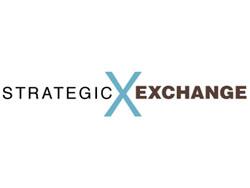Strategic Exchange - May 2008
By Sam Roberts
Much has been said and written about the current economic malaise. The stock market is falling and the money supply is tight. Interest rates are falling and yet these decreases aren’t manifested in lower long term fixed rates to business. Skyrocketing gasoline prices aren’t helping and specifically hit our industry hard in the form of raw material costs, business transportation costs, and even measuring costs for our sales staff. Enumerating all the challenges is neither difficult nor enlightening.
Projections suggest that 2008 is going to be another very difficult year. What should we be doing about this? My answer is: nothing…and everything.
Since the inception of my business in 1984, I have been victimized by, and in turn benefited from, the greater market and economic climate. I purposely avoid reacting to the seemingly compelling exigencies of trying times that can distract me from concentrating on my core principles for growing my business. I always choose to concentrate on those things that I can control.
In good times and bad, the same objectives for my business apply. I focus my attention on the entire sales process and break it down into four distinct categories that contribute to producing a circular process to success:
• Creating qualified traffic in my stores;
• Driving the specification;
• Sharing in the benefit of the sale;
• Validating the customer’s selection of my company.
Each of these elements deserves more attention that I can give in a single article, but I will try to share a few high points of each general category.
Creating traffic goes far beyond advertising. Location, signage, public relations, repeat customers, referral business, and general word of mouth all play an indispensable role.
Where should we advertise and what percentage of sales should be spent in promotion? No one really knows. The power of the Internet cannot, and must not, be ignored. I like television because I believe that the message is more obtrusive when delivered in both an audio and visual vehicle. However, the value of television is diminished by TiVo, the remote control, and the endless array of channels. I like newspapers, even though readership is declining, because the demographics of age, income, and education are improving. I like magazines for institutional ads. Direct mail can be targeted more efficiently than any other advertising vehicle. I have no idea how to accurately measure the true benefit of advertising, but I believe that it is an indispensable element in driving my business forward.
Location is not just about the physical address of your store, but the appearance of the building and signage. They can all be very powerful promotional elements for your business. The exterior presentation should accurately portray your business; the quality of your goods and services and the type of customer that you hope to attract are all communicated by a glance at your shop from the street. Tiffany’s is a great example. The exterior of a Tiffany’s store tells you that you’ll find luxury items inside. Great locations and exterior presentation also have value in the subliminal message that is delivered every time your customer passes by.
Once the customer is in the store, the showroom’s first impression is key. The physical plant that you present reveals, at a glance, if you are likely to have the products that fulfill your customer’s wants and needs, and whether or not your company is a suitable selection to deliver it. Also, salespeople should be presentable, knowledgeable, and, above all, invested in securing the customer’s total satisfaction in all phases of the process.
Too often the selection process is only the start. Once the customer has selected the products they want—in your store, with your sales staff—you have to ensure that your company will actually get the sale. Often, the larger the project, the more vulnerable your company becomes to a process that most resembles an auction. It is enormously difficult to maintain an acceptable level of profitability when the customer’s sole criterion for selection is price, especially when competing from a level playing field at cost. Consideration for margin and volume can never be effectively evaluated without careful scrutiny of the other. Private labeling, exclusivity of product, and competitive advantage at basis are some of our strongest allies to ensure that we get the sale.
When the customer rewards your business with theirs, much of the task remains. Scheduling, installing, and service after the sale all make essential contributions to goal number one, which is creating quality traffic in your store. Each of these things is equally important, and they can all lead to repeat business—the circular process to success.
If we concentrate on making our businesses, in all aspects, as good as they can be, we will experience success regardless of the greater economic climate. In times of recession we’ll still make some money, and in times of general prosperity we’ll make more. Our vendors are generally stock driven. Their horizon is too near. Encourage them to embrace apostasy and abandon their religion of volume and growth. Small business is about profitability and long term viability. Obsession with volume, absent consideration for margin, is a losing proposition. If we all concentrate on the details that will make us successful in the long run, the final results will take care of themselves.
Copyright 2008 Floor Focus
Related Topics:The International Surface Event (TISE)
